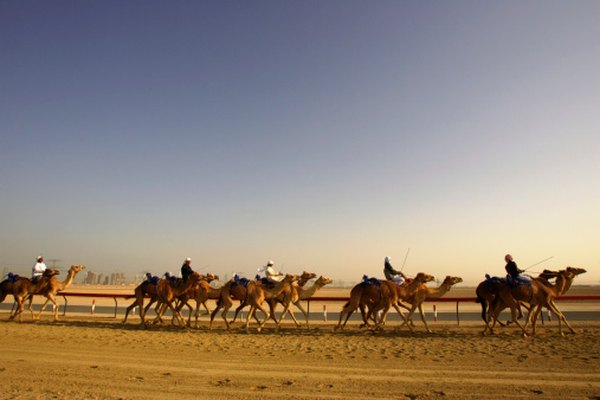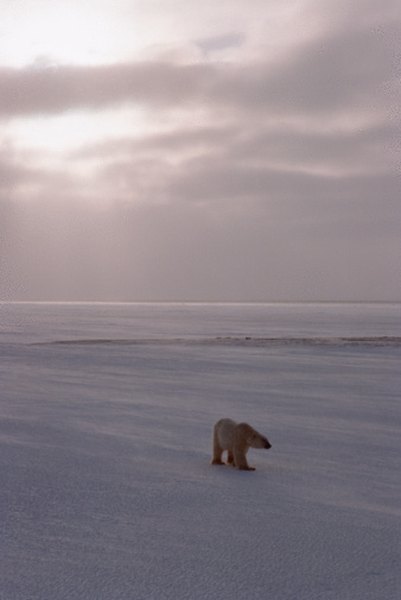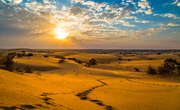
A desert is a region with less than 10 inches of annual rainfall or precipitation. One-fifth of the earth’s surface is covered by deserts. They are found on every continent. Contrary to popular belief, deserts aren’t just hot regions, like the Sahara. There are cold deserts, too, such as Antarctica. Their size makes a few deserts the greatest in the world.
Antarctica

Antarctica is the largest desert in the world at just under 5.4 million square miles. That is 1.4 times bigger than the United States. It is a polar desert that holds the record for the coldest, windiest and the highest altitude. The Antarctica desert has on average 2 inches of precipitation a year. Any rain that falls doesn’t evaporate because of the cold temperature. The result is thick sheets of ice developed over hundreds of thousands of years. Animals that inhabit Antarctica depend on the sea for food. These include penguins, seals, whales and squid. The desert is too cold and harsh for any person to live there permanently.
Sahara

The greatest subtropical desert in the world is the Sahara. Located in northern Africa, it covers just under 3.5 million square miles. The world's second largest desert, the Sahara has a variety of physical features, including sand sheets, dunes, oasis depressions, shallow basins, mountains and plateaus. The highest point is the summit of Mt. Koussi in northern Chad. North Sahara has two rainy seasons, hot summers and cold winters. South Sahara has a dry, tropical climate of mild winters and hot, dry summers. Nomads inhabit the desert, moving from region to region looking for ideal living areas.
Arabian Desert

The second largest subtropical desert is the Arabian Desert. It covers 900,000 square miles, almost the entire Arabian Peninsula. Parts of the desert lie in Saudi Arabia, Jordan, Qatar, Kuwait, Iraq and the United Arab Emirates. Plateaus are a large part of the desert’s geography. Other elements are highlands, broad plains and basins. Temperatures can reach as high as 129 degrees Fahrenheit. Annual rainfall on average is less than 4 inches. Despite this, the greatest natural resource of the Arabian Desert is an underground water supply. There also are reserves of petroleum and natural gas.
Arctic

Another great polar desert is the Arctic. Measuring 62,300 square miles, the Arctic Desert is the northernmost part of the world and includes parts of Alaska, Greenland, Iceland, Russia and Canada. Temperatures can drop as low as minus 22 degrees Fahrenheit in winter and reach 33 degrees in summer. The landscape is a mixture of wide plains and dome glaciers. Large bird colonies inhabit the Arctic. The birds nest on the sides of high cliffs. Species include the arctic tern, snow bunting and ivory gulls. Large mammals also survive in the cold arctic temperatures. The polar bear, arctic fox and walrus are examples of these.
Gobi
Another great desert is the Gobi. It covers most of south Mongolia and stretches 500,000 square miles. The Gobi has a gravel and rocky terrain. The change in temperature from each season can be extreme. It can reach minus 40 degrees Fahrenheit in winter and 104 degrees Fahrenheit in summer. Average rainfall is less than 4 inches per year, and some areas of the Gobi get rain every two or three years. The desert is home to the only remaining Bacterian camels in the wild as well as a small population of Gobi bears. Where vegetation does grow, herders raise animals that survive in the changing climate -- cashmere goats, for example.
References
Resources
Photo Credits
Digital Vision./Photodisc/Getty Images
